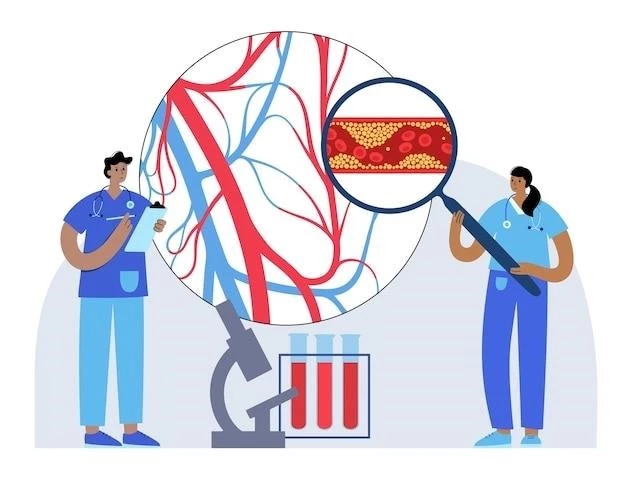Gurrieri–Sammito–Bellussi Syndrome
When facing Gurrieri–Sammito–Bellussi Syndrome, families need support from professionals like a neurologist or geneticist. Medical management, therapy, and early intervention services are crucial for addressing its complexities. Stay informed about new research and advancements in the field.
Overview of Gurrieri–Sammito–Bellussi Syndrome
Gurrieri–Sammito–Bellussi Syndrome is a rare genetic disorder characterized by a range of symptoms including facial anomalies, intellectual disability, developmental delays, speech delay, seizures, short stature, hearing loss, microcephaly, and distinctive facial features. This neurodevelopmental disorder is caused by a mutation in the CRIPT gene, resulting in an autosomal recessive condition.
Individuals with Gurrieri–Sammito–Bellussi Syndrome typically require a multidisciplinary approach to care involving neurologists, geneticists, and various therapists. Early diagnosis and intervention are key to improving outcomes for individuals with this syndrome. Families should seek medical management, physical therapy, occupational therapy, and access to early intervention services to provide comprehensive support for their loved ones with Gurrieri–Sammito–Bellussi Syndrome.
Clinical Features of Gurrieri–Sammito–Bellussi Syndrome
Gurrieri–Sammito–Bellussi Syndrome presents with a spectrum of clinical features, including facial anomalies such as a prominent forehead, wide-set eyes, and a flat nasal bridge. Individuals may also experience intellectual disability, developmental delays, speech delay, seizures, short stature, hearing loss, microcephaly, and distinctive facial features that can aid in diagnosis.
It is important for caregivers and healthcare providers to be aware of these clinical features to facilitate early recognition and intervention for individuals with Gurrieri–Sammito–Bellussi Syndrome. Seeking guidance from specialists like neurologists and geneticists can help in accurate diagnosis and appropriate management of the condition. Regular monitoring and comprehensive care tailored to the specific needs of the individual are essential for optimizing their well-being and quality of life.

Genetic Basis of Gurrieri–Sammito–Bellussi Syndrome
Gurrieri–Sammito–Bellussi Syndrome is caused by mutations in the CRIPT gene, resulting in an autosomal recessive condition. This gene plays a crucial role in normal development, and alterations can lead to the varied clinical manifestations seen in individuals with this syndrome. Genetic testing plays a key role in confirming a diagnosis and understanding the specific genetic changes present in affected individuals.
For families of individuals with Gurrieri–Sammito–Bellussi Syndrome, genetic counseling can provide valuable information about the inheritance pattern of the condition, the likelihood of recurrence in future pregnancies, and available testing options. It is important for caregivers to work closely with geneticists and other healthcare professionals to navigate the complexities of the genetic basis of the syndrome and make informed decisions regarding their loved one’s care and family planning.
Diagnosis of Gurrieri–Sammito–Bellussi Syndrome
Diagnosing Gurrieri–Sammito–Bellussi Syndrome involves a comprehensive evaluation of the individual’s clinical features, developmental milestones, and genetic testing. Healthcare providers, including neurologists and geneticists, play a crucial role in conducting thorough assessments to confirm the presence of the syndrome. Clinical criteria, imaging studies, and molecular testing are often utilized in the diagnostic process.
Families and caregivers should seek out medical professionals experienced in rare genetic conditions to ensure an accurate diagnosis. Early recognition of Gurrieri–Sammito–Bellussi Syndrome is vital for initiating appropriate interventions and support services. Understanding the diagnostic criteria and collaborating with a multidisciplinary team can help families navigate the diagnostic journey and access the resources needed for comprehensive care.
Medical Management of Gurrieri–Sammito–Bellussi Syndrome
Managing Gurrieri–Sammito–Bellussi Syndrome requires a multidisciplinary approach involving neurologists, geneticists, and other healthcare professionals. Treatment strategies are tailored to address the specific needs of each individual, focusing on symptom management, developmental support, and overall well-being. Regular medical evaluations, genetic counseling, and coordinated care are essential components of medical management.
Individuals with Gurrieri–Sammito–Bellussi Syndrome may benefit from medications to control seizures, therapies to enhance communication and motor skills, and interventions to address associated health issues. Caregivers should work closely with healthcare providers to develop a comprehensive care plan that promotes optimal growth and development. Stay informed about the latest medical recommendations and participate actively in your loved one’s medical management for the best outcomes.
Therapies for Gurrieri–Sammito–Bellussi Syndrome
Therapies play a vital role in supporting individuals with Gurrieri–Sammito–Bellussi Syndrome to reach their full potential. Physical therapy can improve motor skills and mobility, while occupational therapy focuses on enhancing daily living activities and cognitive abilities. Speech therapy is crucial for developing communication skills and addressing speech delays often seen in affected individuals.
Early intervention services can help identify and address developmental delays promptly, offering tailored therapies to support growth and learning. Caregivers should collaborate with therapists and specialists to create a customized therapy plan that meets the unique needs of their loved one with Gurrieri–Sammito–Bellussi Syndrome. Consistent therapy sessions and home-based exercises can contribute to improved functional abilities and quality of life.
Supportive Care for Gurrieri–Sammito–Bellussi Syndrome Patients
Providing comprehensive supportive care is essential for individuals with Gurrieri–Sammito–Bellussi Syndrome. Caregivers should prioritize creating a nurturing environment that caters to the unique needs of their loved one. Offering emotional support, fostering independence, and ensuring safety are fundamental aspects of providing care to individuals with this syndrome.
Accessing community resources, support groups, and advocacy organizations can help caregivers navigate the challenges associated with caring for someone with a rare disease like Gurrieri–Sammito–Bellussi Syndrome. Educating yourself about the condition, communicating effectively with healthcare providers, and advocating for the best possible care are crucial components of supportive care. Remember, you are not alone on this journey, and seeking support from others can make a significant difference in the well-being of both the individual with the syndrome and their caregivers.
Prognosis and Outlook for Gurrieri–Sammito–Bellussi Syndrome
The prognosis for individuals with Gurrieri–Sammito–Bellussi Syndrome can vary depending on the severity of symptoms and the individual’s response to treatment and therapies. While the syndrome presents challenges in various aspects of life, early intervention, supportive care, and access to appropriate therapies can significantly improve outcomes and quality of life.
Caregivers should remain optimistic and proactive in addressing the needs of individuals with Gurrieri–Sammito–Bellussi Syndrome. Regular medical monitoring, therapy sessions, and consistent follow-ups with healthcare providers are essential for tracking progress and adjusting treatment plans as needed. By staying informed, collaborating with professionals, and providing a loving and supportive environment, caregivers can positively impact the prognosis and outlook for individuals with this rare genetic disorder.
Research and Advances in Gurrieri–Sammito–Bellussi Syndrome
Ongoing research and advances in understanding Gurrieri–Sammito–Bellussi Syndrome are vital for enhancing diagnostic techniques, treatment options, and overall care for affected individuals. Researchers are focused on uncovering additional genetic factors, exploring potential therapies, and improving outcomes for those living with this rare genetic disorder.
Stay informed about the latest developments in the field by following reputable sources, participating in research studies if applicable, and connecting with advocacy organizations dedicated to rare diseases. By staying engaged in the research community, individuals and families affected by Gurrieri–Sammito–Bellussi Syndrome can contribute to advancements in knowledge and potentially benefit from emerging treatments and interventions.
Coping Strategies for Families of Individuals with Gurrieri–Sammito–Bellussi Syndrome
Caring for a loved one with Gurrieri–Sammito–Bellussi Syndrome can present unique challenges, and it is essential for families to prioritize self-care and seek support. Building a strong support network, connecting with other families facing similar experiences, and accessing counseling services can help caregivers manage stress and emotional well-being.
Developing coping strategies, setting realistic expectations, and celebrating small achievements can foster a positive outlook and resilience in the face of adversity. Educating yourself about the syndrome, staying connected with healthcare providers, and actively engaging in your loved one’s care can empower you to navigate the complexities of managing a rare genetic disorder. Remember, practicing self-compassion and seeking assistance when needed are crucial aspects of coping effectively.
Education and Advocacy for Gurrieri–Sammito–Bellussi Syndrome
Education and advocacy are crucial components in raising awareness and promoting the needs of individuals with Gurrieri–Sammito–Bellussi Syndrome. By educating the community, healthcare professionals, and policymakers about the challenges faced by those with this rare genetic disorder, you can help foster understanding and compassion.
Engage in advocacy efforts by participating in awareness campaigns, supporting research initiatives, and collaborating with organizations dedicated to rare diseases. By sharing your personal experiences, advocating for better resources and support services, and championing the rights of individuals with Gurrieri–Sammito–Bellussi Syndrome, you can make a meaningful impact in improving the quality of life for affected individuals and their families.
Future Directions in Understanding Gurrieri–Sammito–Bellussi Syndrome
Future directions in understanding Gurrieri–Sammito–Bellussi Syndrome involve advancing genetic research, exploring potential targeted therapies, and enhancing support services for affected individuals. Researchers are working towards uncovering additional genetic factors contributing to the syndrome and developing more precise diagnostic tools.
By staying engaged in the scientific community, advocating for increased funding for rare disease research, and participating in clinical trials, individuals and families affected by Gurrieri–Sammito–Bellussi Syndrome can play a significant role in shaping future advancements. Collaborating with healthcare professionals, researchers, and advocacy groups can lead to improved outcomes and quality of life for individuals living with this rare genetic disorder.
Conclusion
In conclusion, Gurrieri–Sammito–Bellussi Syndrome is a complex rare genetic disorder characterized by facial anomalies, intellectual disability, and developmental delays. Through early intervention services, medical management, and therapies, individuals with this syndrome can improve their quality of life and reach their full potential.
It is essential for families to advocate for their loved ones, access support services, and stay informed about research advances. By promoting awareness, fostering a supportive environment, and actively participating in their care, individuals with Gurrieri–Sammito–Bellussi Syndrome can thrive amidst the challenges they face. Together, continued efforts in education, research, and advocacy can pave the way for a brighter future for those affected by this rare genetic condition.
